
Collection Profile: On Iskonawa Cultural Diversity
- Post Date: 4/5/2023
- Author: Carolina Rodriguez Alzza, PhD student
- Reading Time: 7 minute read
In the summer of 2022, I visited the Spurlock Museum to study the Iskonawa collection of ceramics, tools, weapons, textiles, and ornaments. The Iskonawa are an Indigenous group of roughly 100 people. They are currently settled in Amazonian Peru near the Calleria River, a tributary of the Ucayali River.
As a researcher of the Amazon and Iskonawa culture, I was excited to learn the stories behind these artifacts. While the research is still ongoing, I will present a brief profile of the collection here, highlighting the diversity of these artifacts, materials, techniques, and cultural practices to which they belong.
This collection consists of 36 Iskonawa artifacts gathered over several years, around 1959–1967. The primary collector was Donald W. Lathrap, who was an archeologist and professor at the University of Illinois who researched extensively in the Ucayali basin. Another contributor was Clifton Russell, a missionary from the South America Mission. This collection was held by the Department of Anthropology at the University of Illinois and transferred to the Spurlock Museum in 2000.
Ceramics
There are many ceramics in this collection. The vessels are cataloged with their indigenous name in the Iskonawa language, a language that is now considered endangered. Most of these vessels are for cooking or storing food or water, and there is also one for fermenting corn to make corn chicha, a beer drunk during festivities. Most of the ceramic vessels have a conical base which permits cooking with wood and placing them in a hole in the ground. One of the vessels has handles at both sides and a metal strip. Additionally, there is also a nut used to polish the ceramic pieces.
-
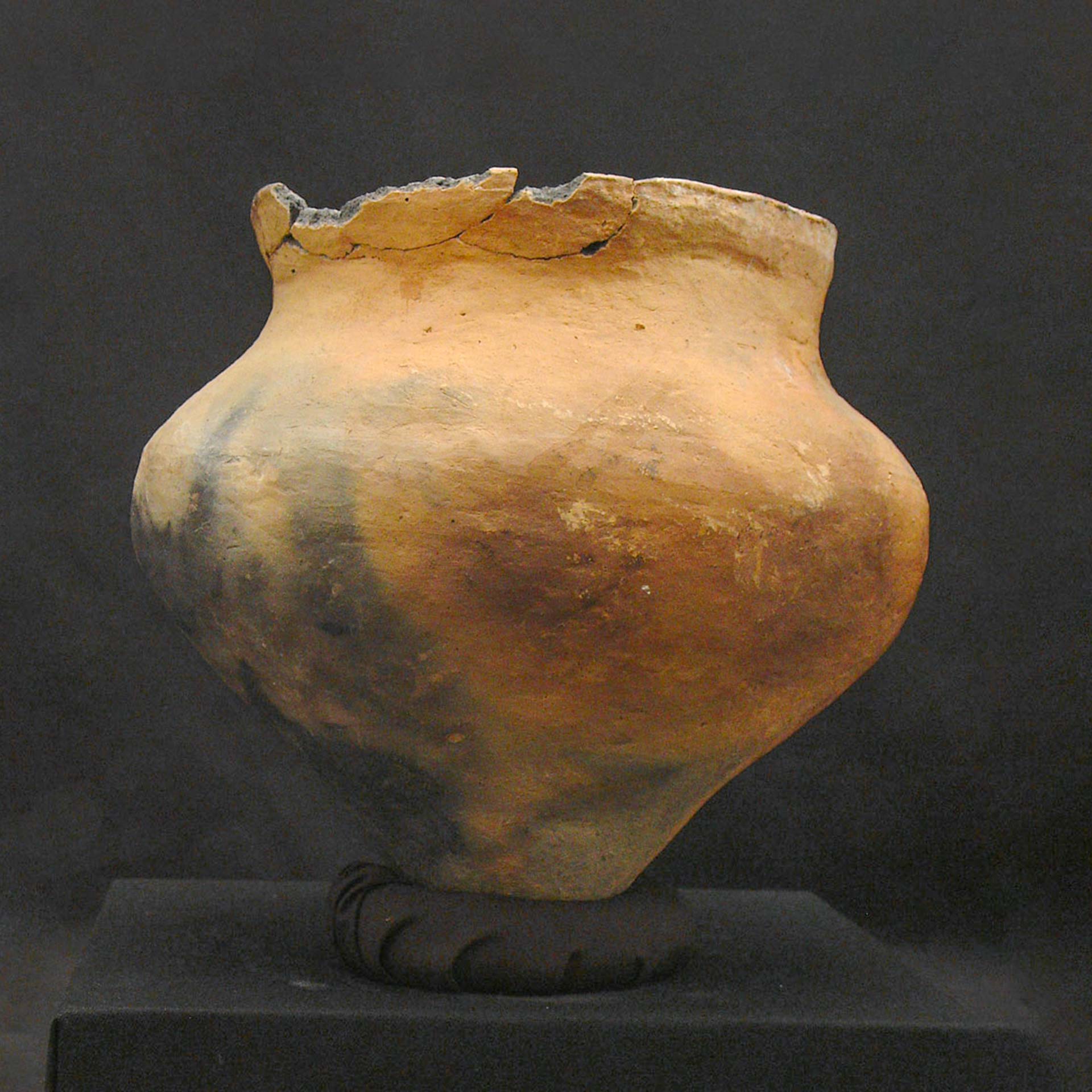 Kuti, Brewing Urn 2000.01.0640
Kuti, Brewing Urn 2000.01.0640 -
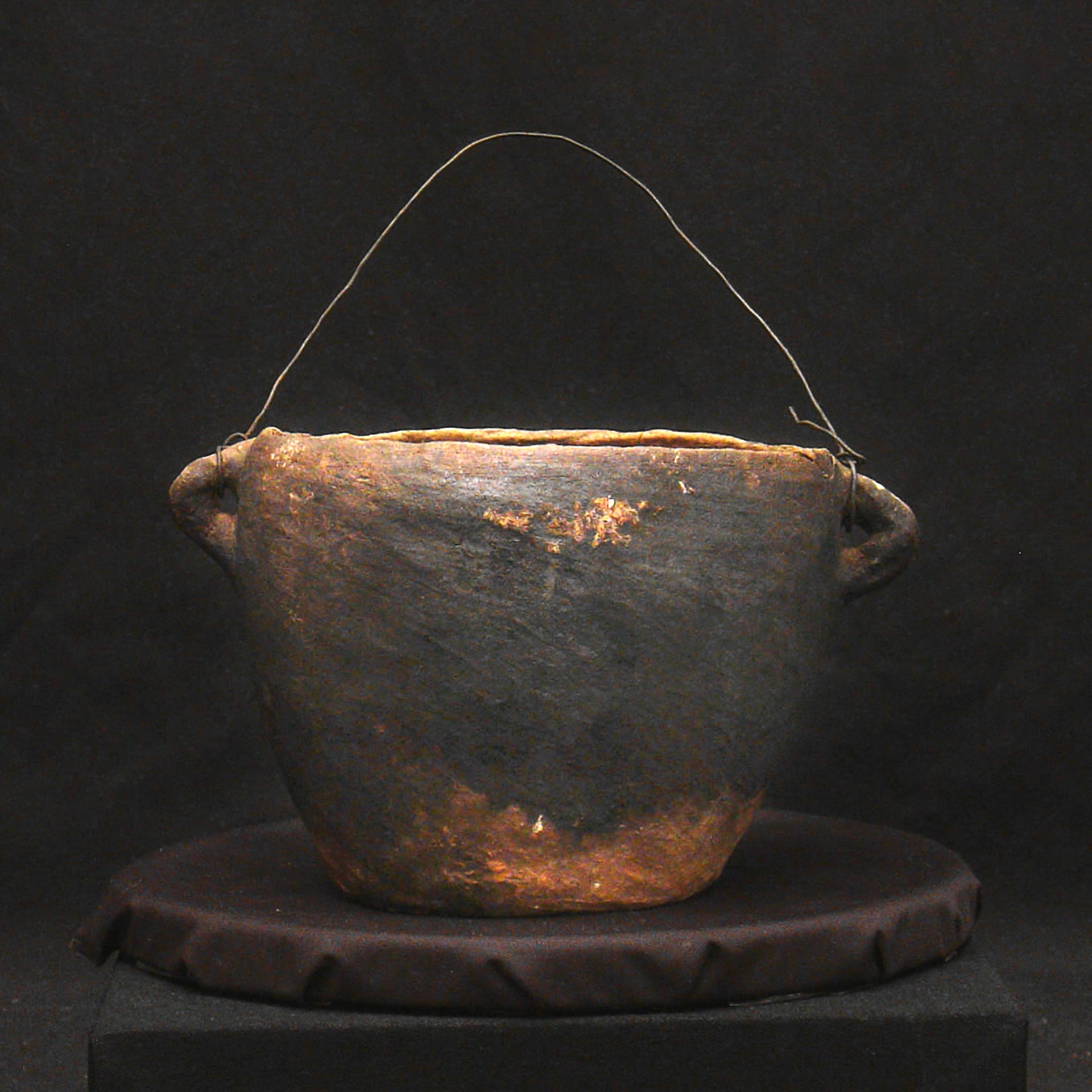 Nami Mapu, Cooking Pot 2000.01.0575
Nami Mapu, Cooking Pot 2000.01.0575 -
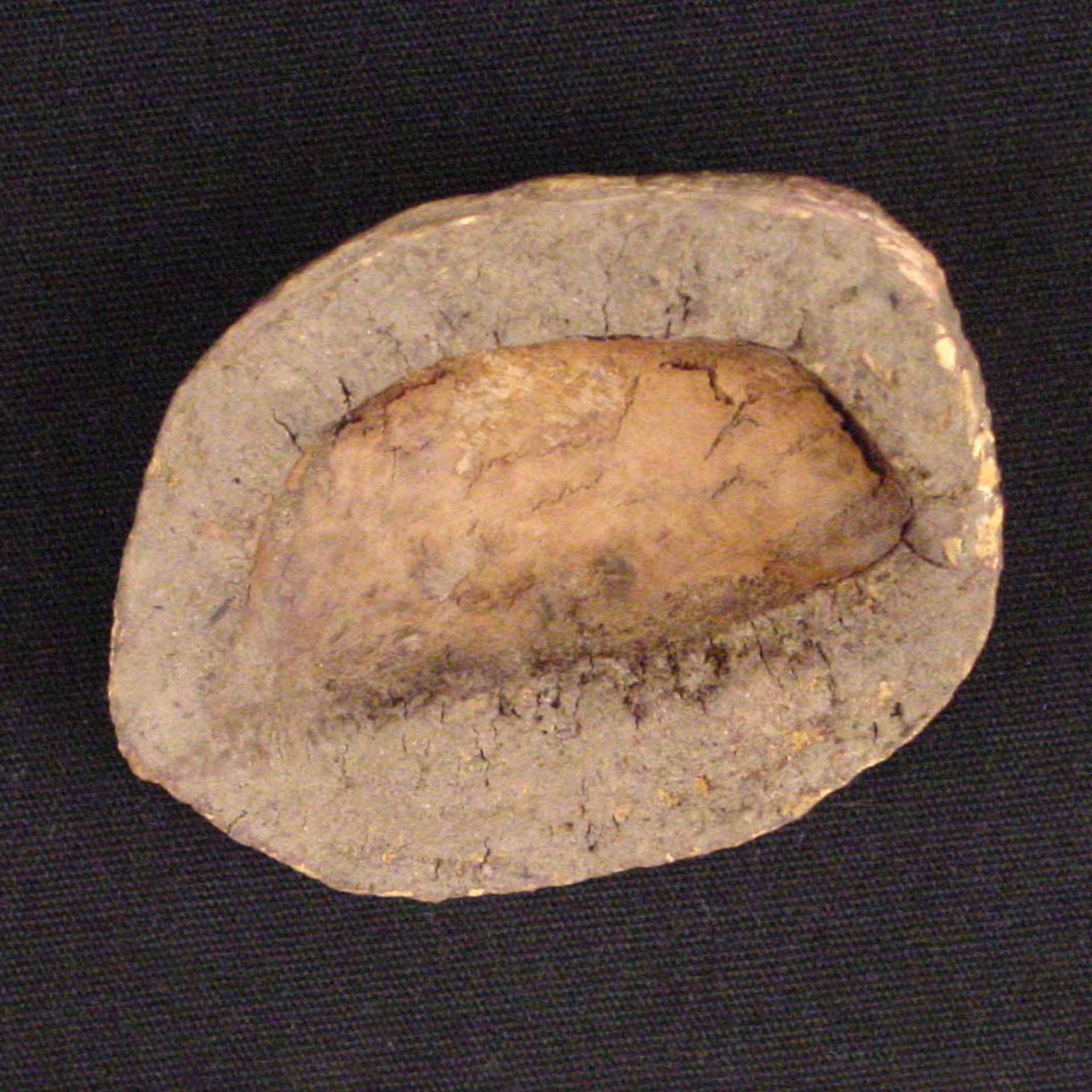 Polishing Nut 2000.01.0300
Polishing Nut 2000.01.0300
Tools and Weapons
There is also a group of tools and weapons crafted mainly with chonta, a durable palm wood. The weeding machete is used to clear fields in the jungle. Chonta arrows are constructed with additional materials such as bamboo and animal teeth. The arrow form changes according to their use, being either hunting or fishing. While the hunting arrows have only one point, the fishing arrows have many. Between the shaft and point, both types of arrows are decorated with corn husks, and the arrow’s nock (the slotted tip that connects the arrow to the bowstring) is decorated with cotton thread. One of these arrows has red and black pigmentation on both sides, and traced designs on the reverse side of the arrow point. These colors were made from achiote, a spice and coloring agent made from an evergreen shrub, and from genipa, an evergreen tree.
-
 Macgete, Weeding Tool 2000.01.0366
Macgete, Weeding Tool 2000.01.0366 -
 Arrow 2000.01.0511
Arrow 2000.01.0511 -
 Arrow 2000.01.0690
Arrow 2000.01.0690 -
 Fish Spear 2000.01.0691
Fish Spear 2000.01.0691
Another weapon in the collection is the macana. Macanas are made of one piece of chonta and have a spine blade with a diagonal tip at the top. The bottom tip is useful to drive the macana into the ground when it isn’t being used. The macana handle is covered with corn husks and set with cotton threads. These macanas additionally show the presence of unidentified leaves. The well-preserved black pigment drew my attention. As part of the decoration, there are two black stripes which clearly identify Iskonawa designs.
-
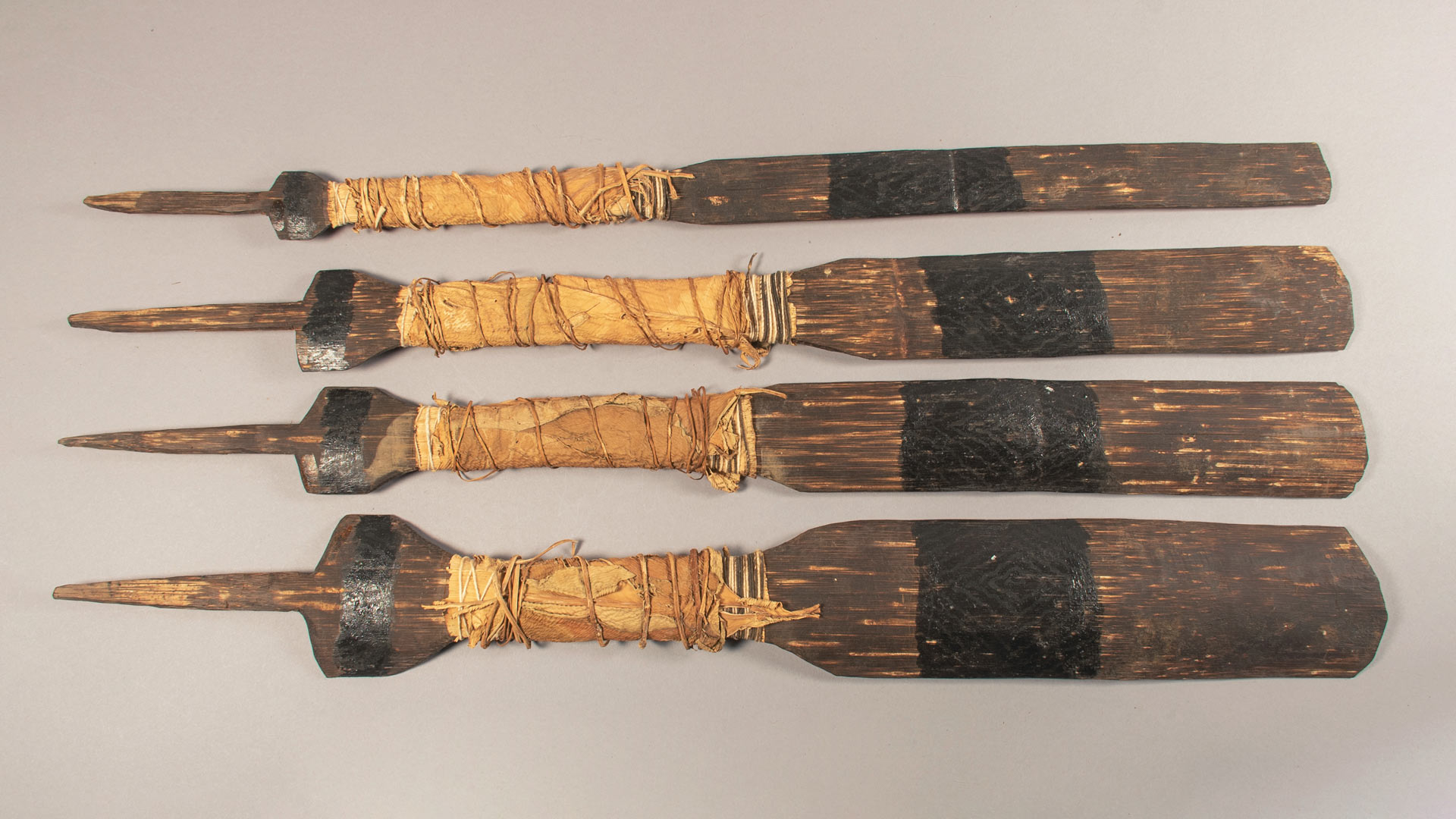 Sword-club 2000.01.0378A-D
Sword-club 2000.01.0378A-D
Textiles and Weaving
The textile weaving process is represented, from a cotton seed, to spindles, to finished items. Women collected cotton from their farms and made thread using spindles of wood and clay, and there are two kinds of cotton thread in this set. Weaving instruments were stored in a basket, which is significantly smaller than the other two carrying baskets. There are also finished artifacts including a hammock, and ligatures used for corporal decoration.
-
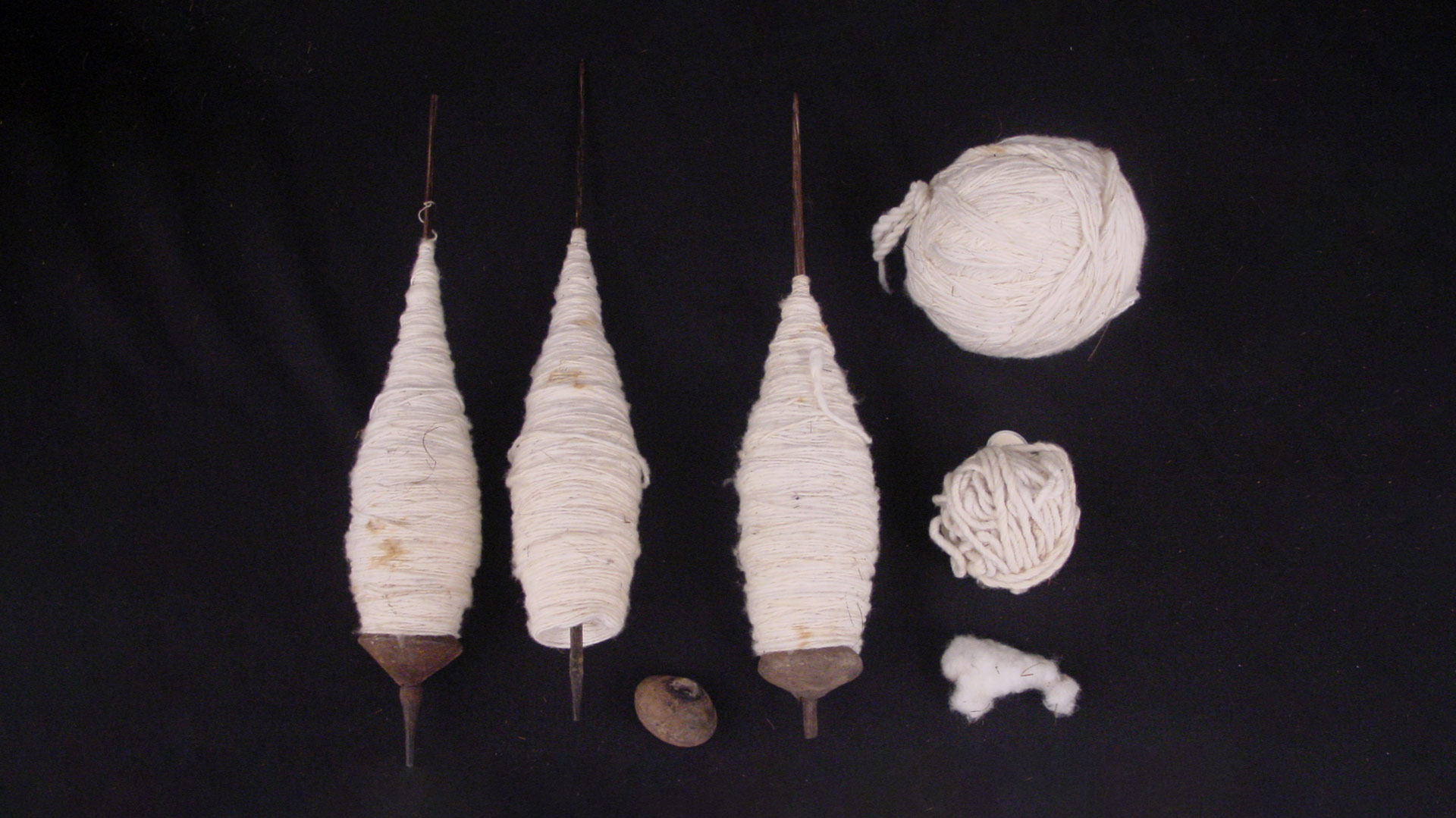 Spindles and Yarn 2000.01.0451B-G
Spindles and Yarn 2000.01.0451B-G -
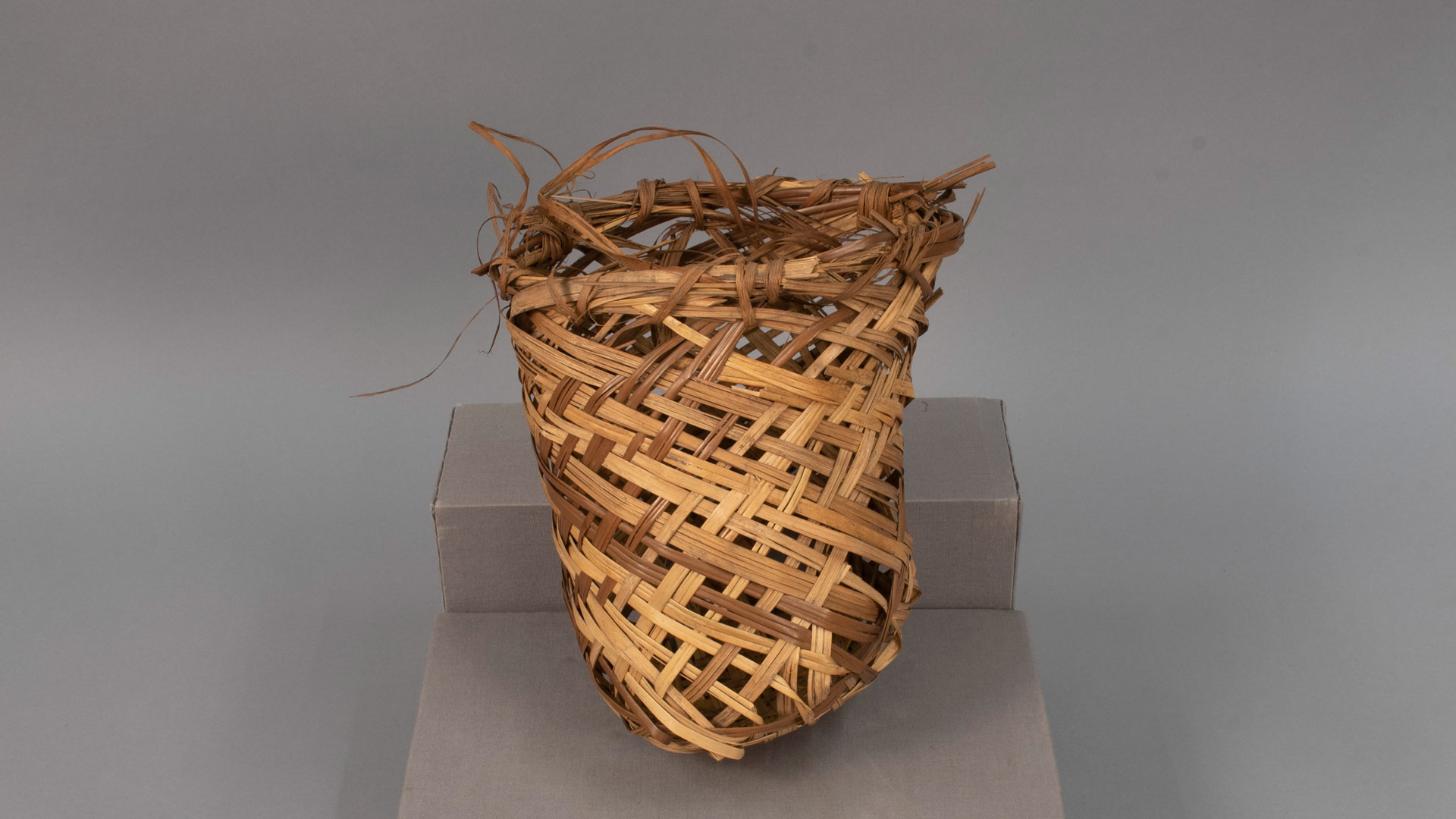 Basket Holding Cotton Yarn 2000.01.0451A
Basket Holding Cotton Yarn 2000.01.0451A
-
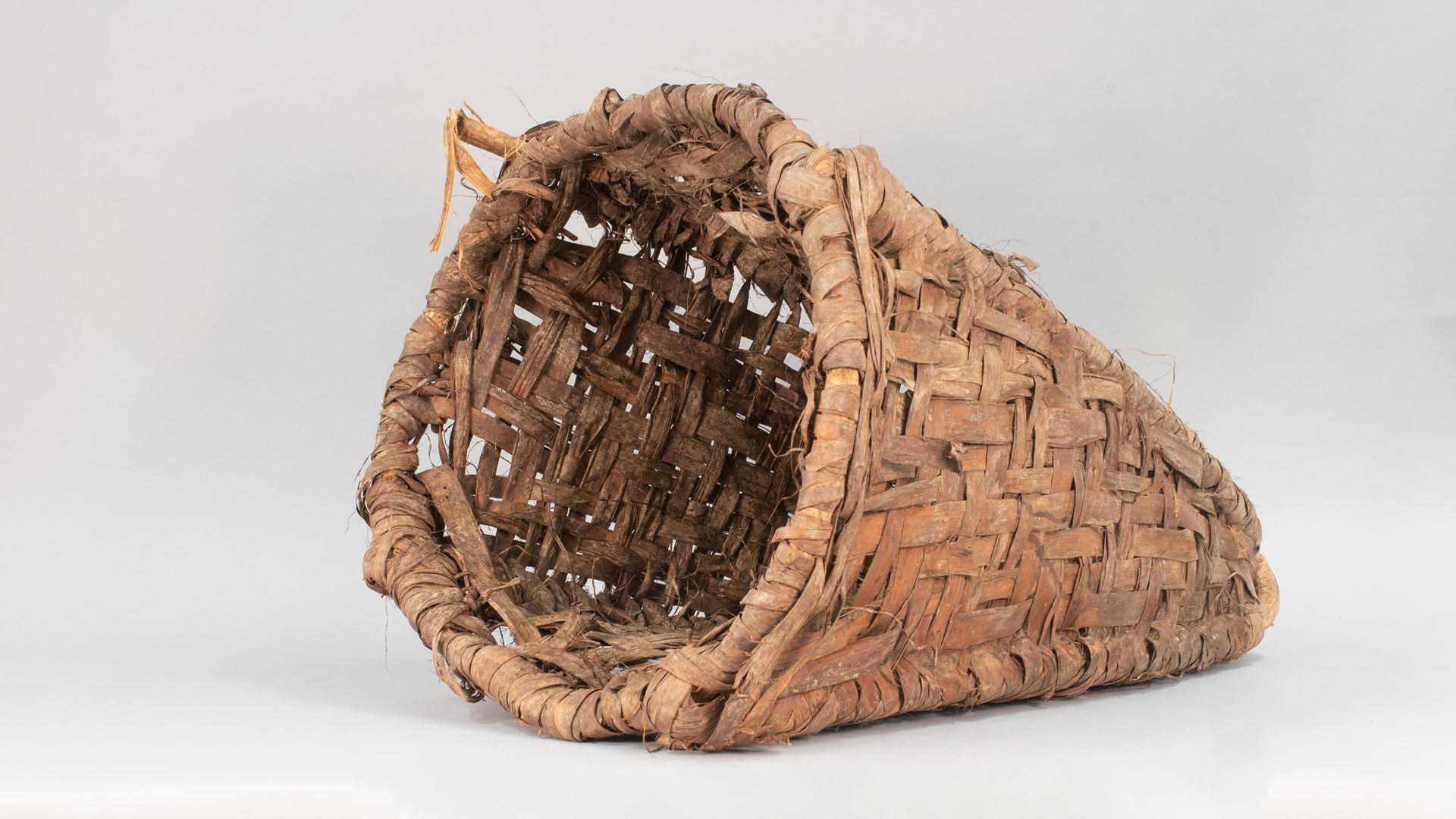 Carrying Basket 2000.01.0446
Carrying Basket 2000.01.0446 -
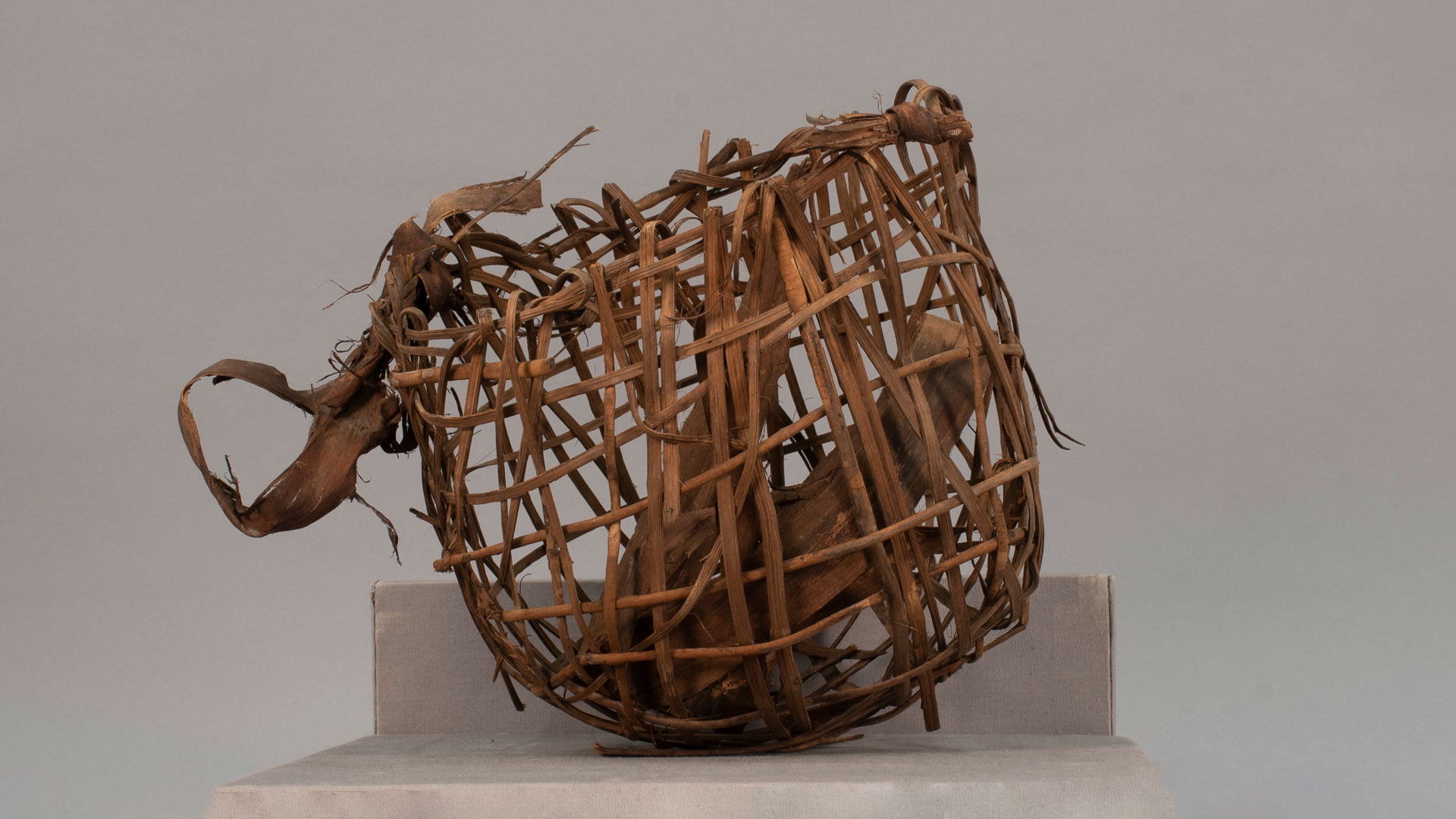 Basket 2000.01.0396
Basket 2000.01.0396
-
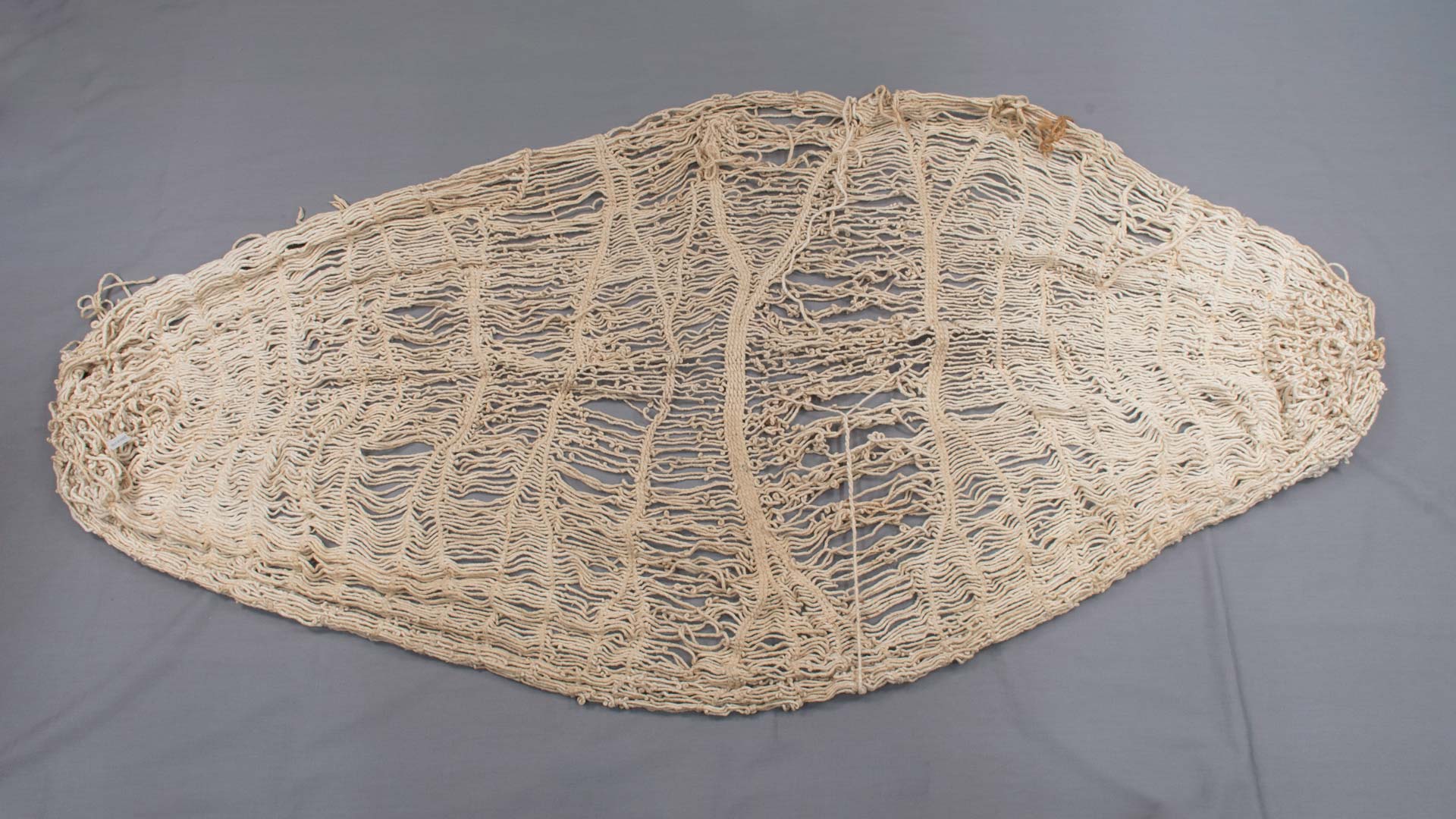 Hammock 2000.01.0781
Hammock 2000.01.0781
-
 Ligature, Ankle Bracelet 2000.01.0773
Ligature, Ankle Bracelet 2000.01.0773 -
 Ligature, Ankle Bracelet 2000.01.0774A
Ligature, Ankle Bracelet 2000.01.0774A -
 Ligature, Ankle Bracelet 2000.01.0774B
Ligature, Ankle Bracelet 2000.01.0774B -
 Ligaturel 2000.01.0801
Ligaturel 2000.01.0801
Ornaments
The collection also includes Iskonawa ornaments, among which the crowns are especially striking. The crowns were made by attaching macaw and oriole feathers to a circular fiber band with black and white cotton thread. Iskonawa men used to wear crowns as part of their festival attire. There is also a male nasal ornament made from a shell which was hung on the nose using a cotton thread. This is different from the triangular shape worn by women. Also, this collection includes a penile sheath made with a deer bone.
-
 Crown 2000.01.0509
Crown 2000.01.0509 -
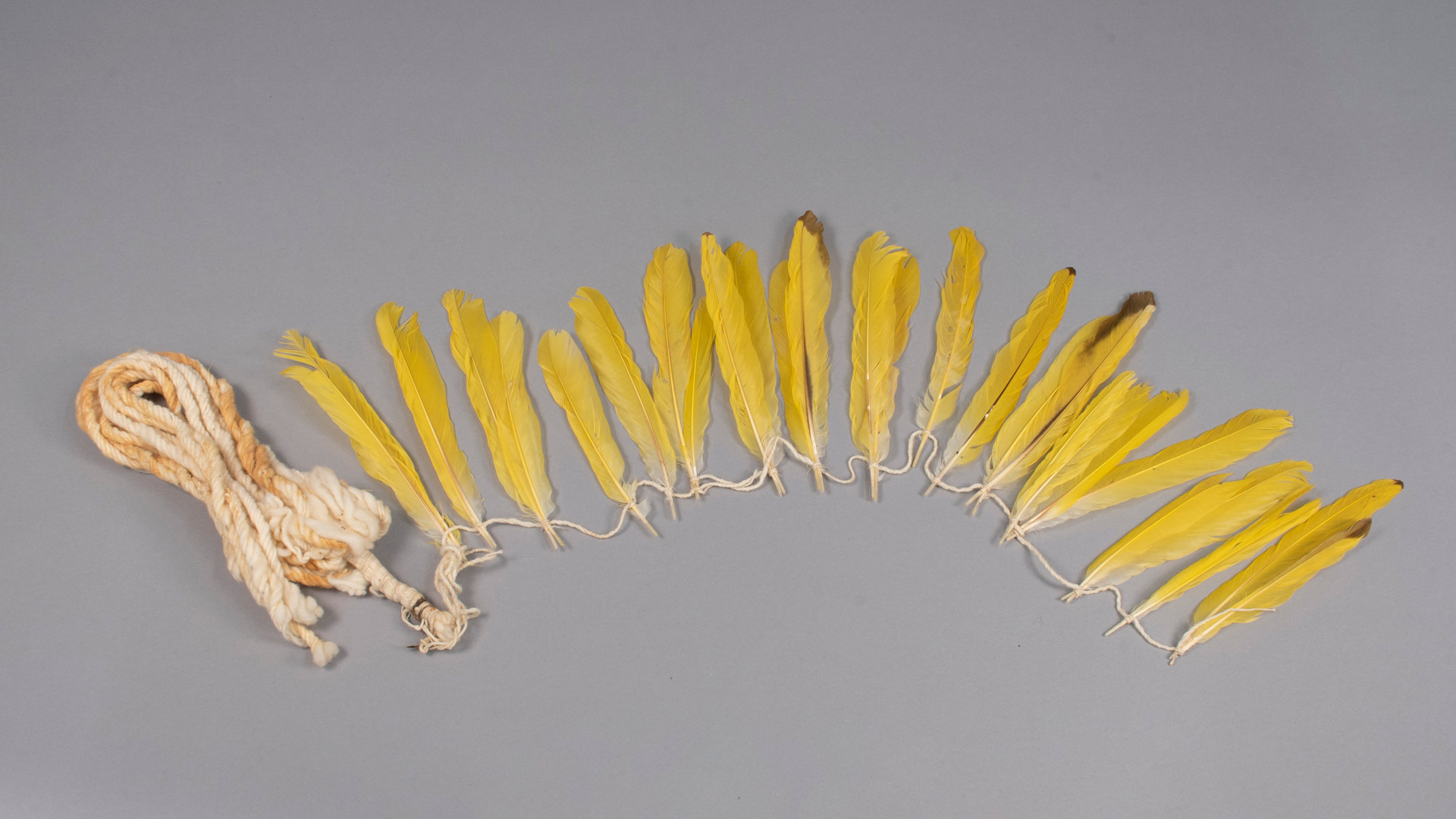 Tassel 2000.01.0483
Tassel 2000.01.0483 -
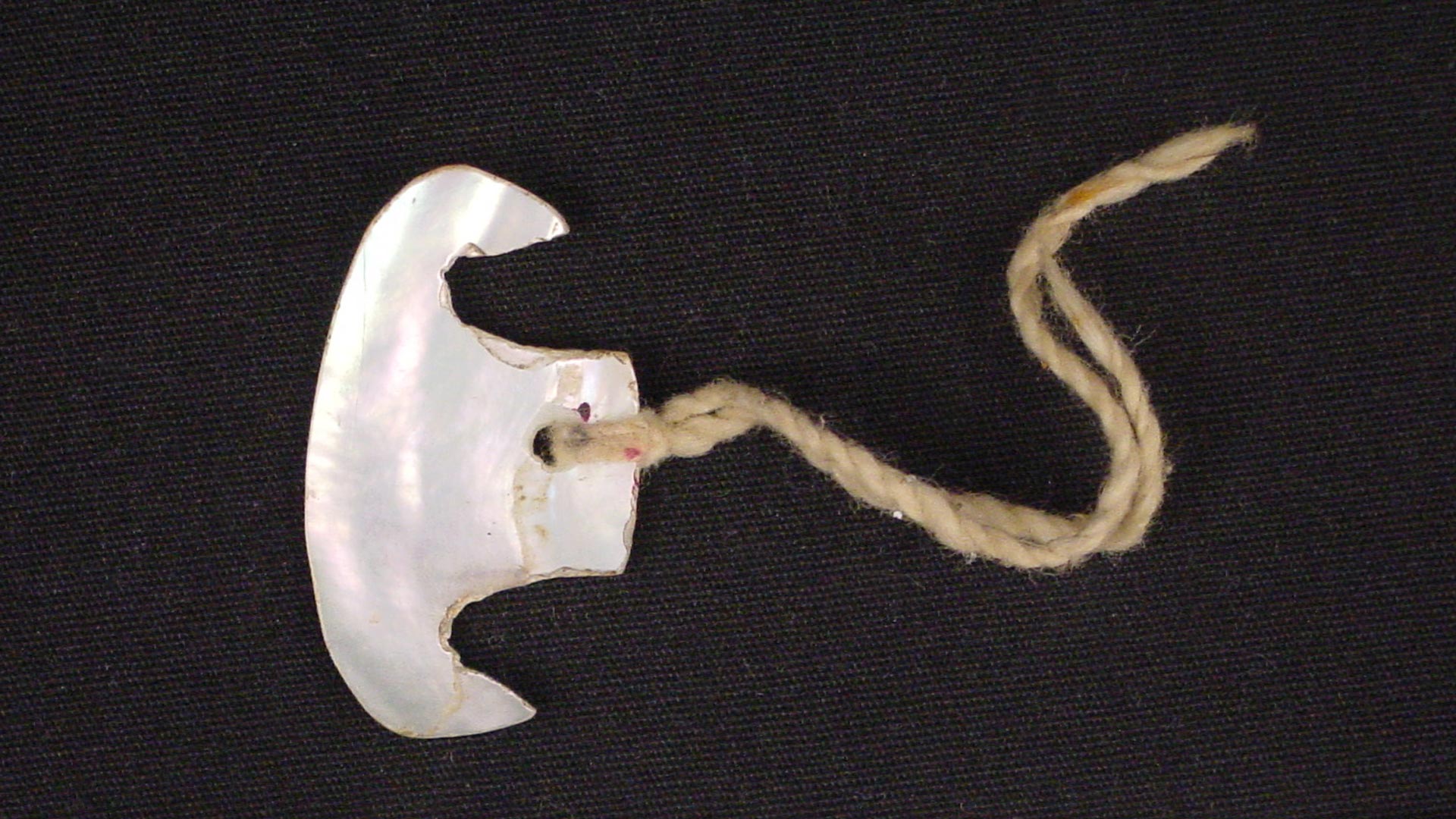 Nose Ornament 2000.01.0302
Nose Ornament 2000.01.0302 -
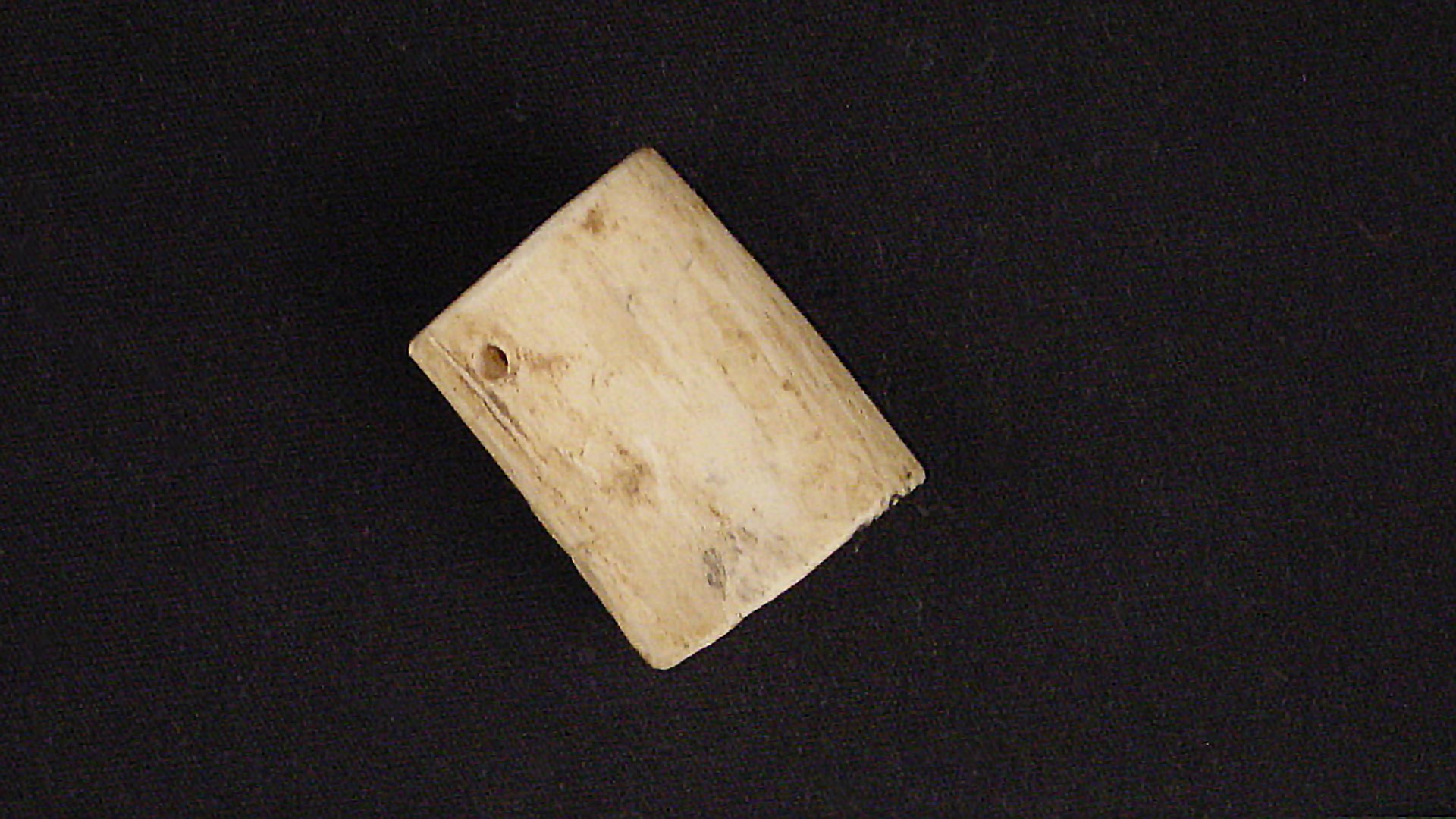 Penis Sheath 2000.01.0304
Penis Sheath 2000.01.0304
Conclusion
The artifacts in this collection represent a great diversity of knowledge. Knowledge of the local environment is expressed with the use of many natural materials used in these very detailed objects. A vast knowledge of techniques makes it possible to have so many artifacts with very specific uses. Knowledge of the language is codified in the object's name which carries a valuable linguistic record. These artifacts, from a seed of cotton to weapons and vessels, show many, but not all, aspects of Iskonawa society.
-
- Share:
- Subscribe to Newletter
- Giving